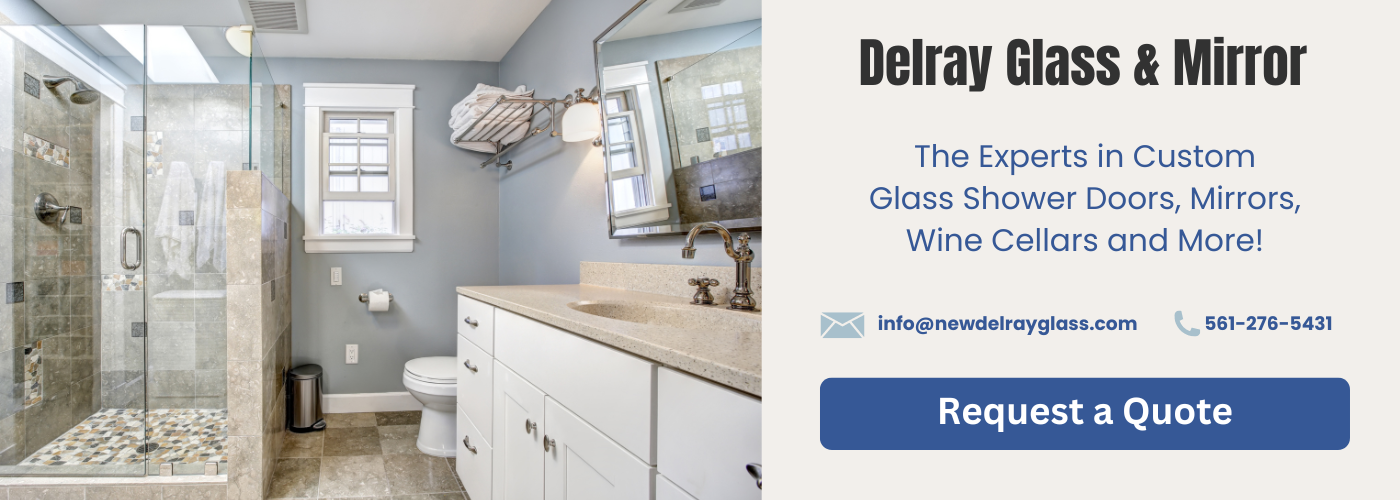**How Does the Door Size Impact the Overall Structural Integrity of a Glass Enclosure?**
Glass enclosures, whether used for modern office spaces, shower stalls, or architectural facades, are celebrated for their sleek aesthetic and ability to create open, light-filled environments. However, designing a structurally sound glass enclosure requires careful consideration of numerous factors, one of which is the size of the door. Beyond its functional role, the door’s dimensions can significantly influence the enclosure’s overall stability and durability. From load distribution to material strength, the size of the door has far-reaching implications on the enclosure’s performance and safety.
This article explores the relationship between door size and the structural integrity of glass enclosures by examining five key subtopics. First, we’ll delve into **Load Distribution and Stress Concentration**, analyzing how larger glass doors can alter the way forces are distributed across the structure and increase stress at critical points. Next, we’ll consider the **Frame and Hardware Support Requirements**, looking at how door size necessitates adjustments in the supporting components to maintain stability. The discussion will also cover **Glass Thickness and Material Strength**, highlighting the importance of selecting materials that can withstand the additional demands imposed by larger doors. Moving on, we’ll assess the **Impact on Flexibility and Stability of the Structure**, exploring how changes in door size can affect the overall rigidity and resilience of the enclosure. Finally, we’ll discuss **Door Placement and Structural Balance**, focusing on how the location of the door relative to the enclosure’s framework can either enhance or weaken its integrity.
By breaking down these critical aspects, this article will provide a comprehensive understanding of how door size can shape the structural performance of a glass enclosure. Whether you’re an architect, engineer, or homeowner considering a glass installation, this information will help you make informed decisions to ensure both functionality and durability.


Load Distribution and Stress Concentration
The size of the door in a glass enclosure plays a critical role in determining how loads are distributed and where stress concentrations occur. A larger door typically creates a more significant interruption in the continuity of the glass enclosure’s structure, which can lead to localized stress points around the edges of the door frame or hinges. These stress concentrations can weaken the structural integrity of the enclosure if not properly accounted for during the design process. Engineers and designers must carefully analyze the load paths and ensure that the surrounding glass panels and supporting framework can handle the redistributed loads without failure.
Moreover, the interaction between the glass panels and the supporting hardware becomes increasingly complex as door size grows. Larger doors generate more significant forces when opened or closed, especially if they are heavy. This movement can induce additional stresses on the surrounding structure, potentially leading to issues like microfractures in the glass or deformation in the supporting frame over time. Reinforcement around the door area, such as thicker glass, stronger framing materials, or specialized hardware, may be necessary to mitigate these effects and maintain the overall stability of the enclosure.
In addition, the way stress is concentrated around the door hinges and latches is critical for long-term durability. For example, improperly aligned hardware or undersized fittings can exacerbate stress concentrations, increasing the likelihood of structural failure. By understanding how door size impacts load distribution and stress concentration, designers can take proactive measures to create a glass enclosure that is both functional and structurally sound. This often involves a careful balance between aesthetics, practicality, and engineering considerations to ensure the enclosure can withstand the demands of daily use.
Frame and Hardware Support Requirements
When considering the impact of door size on the structural integrity of a glass enclosure, the frame and hardware support requirements play a pivotal role. The size of the door directly affects the type and strength of the supporting frame and hardware needed to ensure the entire structure remains stable and functional over time. A larger door typically demands more robust hardware, such as hinges, handles, and supporting brackets, as well as a reinforced frame to support the increased weight and stress. Without adequate support, the enclosure’s stability may be compromised, leading to potential safety hazards or structural failures under stress.
The frame itself must be designed to distribute the weight of the door evenly across the enclosure. For example, glass doors that are oversized require frames made of durable materials such as aluminum, stainless steel, or reinforced composites. These materials help ensure that the enclosure can withstand the additional stresses imposed by the door’s size and weight. Furthermore, the connection points between the door and frame must be engineered to resist wear and tear over time, as they will bear the brunt of repeated usage and motion.
Additionally, the hardware used to secure the door to the frame must align with the specific demands of the enclosure’s size and purpose. For instance, heavy-duty hinges and locking mechanisms are necessary for larger doors to prevent sagging, misalignment, or failure under pressure. Properly calibrated hardware not only supports the door but also ensures smooth operation and reduces strain on the surrounding glass panels. Ultimately, the frame and hardware requirements are critical factors that must be carefully considered to maintain the strength, durability, and safety of a glass enclosure, particularly when accommodating a larger door.
Glass Thickness and Material Strength
The thickness and material strength of the glass used in a door play a crucial role in determining the overall structural integrity of a glass enclosure. This is because glass doors are not only functional components but also integral to the enclosure’s ability to withstand external forces such as wind pressure, impacts, and the weight of the door itself. Thicker glass tends to distribute loads more evenly and reduce stress concentration points, minimizing the likelihood of cracks or failure. Additionally, the material properties of the glass, such as whether it is tempered or laminated, further enhance its capacity to endure stress and contribute to the safety and durability of the structure.
When selecting the appropriate glass thickness for a door, it is essential to consider the size of the door and its position within the enclosure. Larger doors typically demand thicker glass to support their weight and to resist bending or bowing under pressure. Similarly, if the glass enclosure is located in an area prone to significant environmental stresses, such as high winds or heavy usage, choosing a more robust glass material becomes even more critical. Inadequate thickness or poor-quality materials can lead to structural vulnerabilities, including the potential for breakage that can compromise the entire enclosure.
Another factor to consider is how the glass thickness interacts with the hardware and framing. Thicker glass often requires specialized hardware to accommodate its weight and ensure a secure fit. The choice of material strength also affects how the door responds to repeated use over time. For example, tempered glass is designed to be more resistant to impacts and shattering, making it a safer option for doors in high-traffic areas. By carefully balancing glass thickness and material strength with the enclosure’s functional and aesthetic requirements, designers and engineers can create a structure that is both visually appealing and structurally sound.
“`html
Impact on Flexibility and Stability of the Structure
“`
The size of a door in a glass enclosure significantly affects the flexibility and stability of the overall structure. Larger doors, while visually appealing and offering functional benefits such as ease of access, introduce increased movement and stress into the enclosure. Glass, as a material, is inherently rigid and brittle, which makes it less forgiving when subjected to force. A larger door creates a wider opening in the enclosure, reducing the structural continuity and making the surrounding framework more susceptible to bending or twisting. This can compromise the stability of the entire system, especially if the enclosure is subjected to external forces like wind pressure or frequent usage.
Flexibility is another critical aspect impacted by door size. Smaller doors generally allow for better load distribution across the entire structure, maintaining a more uniform stress profile. Conversely, larger doors often require additional reinforcements, such as thicker frames or stronger hinges, to manage localized stresses and prevent the glass from cracking or failing. These reinforcements can reduce the overall flexibility of the structure, making it less adaptable to environmental changes like temperature fluctuations or minor ground movements.
To maintain the balance between aesthetics, functionality, and structural integrity, careful consideration must be given to door size during the design phase. Engineers and designers often rely on advanced modeling techniques to predict how different door dimensions will affect the enclosure’s performance. By optimizing the door size and incorporating appropriate support mechanisms, such as tempered glass or reinforced frames, the structure can achieve a harmonious balance of flexibility and stability, ensuring both safety and durability over time.
Door Placement and Structural Balance
The placement of a door in a glass enclosure plays a significant role in determining its overall structural balance and integrity. Proper door placement ensures that the enclosure maintains its stability while accommodating the dynamic forces introduced by the door’s movement and weight. A poorly placed door can lead to uneven stress distribution, compromising both the durability and safety of the structure.
When designing a glass enclosure, it is essential to consider how the door’s location affects the balance of the enclosure. For instance, a door positioned asymmetrically might cause one side of the structure to bear more weight or stress than the other. This imbalance can create tension points in the glass and supporting framework, increasing the likelihood of cracks, warping, or even catastrophic failure over time. Symmetrical or strategically placed doors help distribute the forces evenly, reducing the risk of structural issues.
Furthermore, door placement impacts how the enclosure interacts with external forces, such as wind or pressure changes. A door located near an edge or corner might leave the structure vulnerable to flexing or instability, especially in larger enclosures. Designers often reinforce the framework around the door to mitigate such risks, ensuring the enclosure remains sound under various conditions.
Careful planning of door placement also enhances the overall functionality of the enclosure. By positioning the door in a way that minimizes stress and maximizes balance, the structure can achieve both aesthetic appeal and long-term durability. This thoughtful approach ensures that the door not only serves its practical purpose but also contributes to the enclosure’s overall strength and safety.
